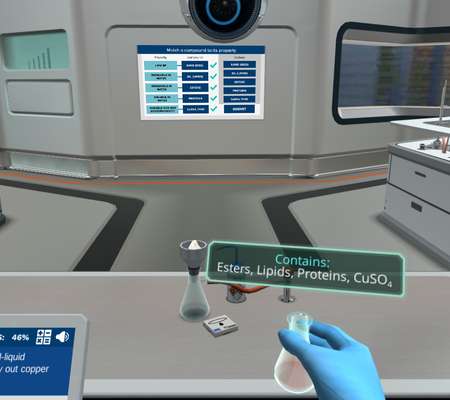Heading 1
Heading 2
Heading 3
Heading 4
Heading 5
Heading 6
Lorem ipsum dolor sit amet, consectetur adipiscing elit, sed do eiusmod tempor incididunt ut labore et dolore magna aliqua. Ut enim ad minim veniam, quis nostrud exercitation ullamco laboris nisi ut aliquip ex ea commodo consequat. Duis aute irure dolor in reprehenderit in voluptate velit esse cillum dolore eu fugiat nulla pariatur.
Block quote
Ordered list
- Item 1
- Item 2
- Item 3
Unordered list
- Item A
- Item B
- Item C
Bold text
Emphasis
Superscript
Subscript
About This Simulation
Learn about organ systems, their major functions, and the body cavities they're placed in, then use this knowledge to help respond to a medical emergency. Can you connect a patient’s symptoms to a potentially failing organ system?
Learning Objectives
- Identify the organ systems of the body and give an overview of their positions and major functions
- Locate the major body systems within the body
- Describe the major cavities of the human body
About This Simulation
Lab Techniques
Related Standards
- EHEA First Cycle
- EHEA Second Cycle
- FHEQ 6
- SCQF 10
- SCQF 9
- US College Year 1
- US College Year 2
Learn More About This Simulation
Quick, call the emergency hotline! In this simulation, you'll learn about the organ systems that keep our body running and some of their major functions. You'll identify body cavities to understand where the organ systems are placed and how they are protected. Knowing about organ systems and body cavities can help you narrow down which organ system might be failing when you are faced with a critical situation in the lab.
Keep an eye on your lab buddy's symptoms
You'll be paired up with Myra, your lab buddy for the day. Myra isn't feeling very well, and you'll have to take note of her symptoms to understand what might be causing them. What you notice may make a difference when calling the emergency hotline.
Identify organ systems and body cavities
To help assess what might be going on with Myra, dive deeper into the organ systems, their major functions, and the body cavities they're placed in. Your new knowledge will be tested in a recap activity where you will link the appropriate organ systems to their cavities.
Help the emergency responders
After observing Myra's symptoms and learning about body cavities and organ systems, you will be faced with a medical emergency. It's time to call in some more experienced hands. Support the emergency crew in diagnosing Myra by answering their questions. Your input will most certainly make a difference!
For Science Programs Providing a Learning Advantage
Boost STEM Pass Rates
Boost Learning with Fun
75% of students show high engagement and improved grades with Labster
Discover Simulations That Match Your Syllabus
Easily bolster your learning objectives with relevant, interactive content
Place Students in the Shoes of Real Scientists
Practice a lab procedure or visualize theory through narrative-driven scenarios


FAQs
Find answers to frequently asked questions.
Heading 1
Heading 2
Heading 3
Heading 4
Heading 5
Heading 6
Lorem ipsum dolor sit amet, consectetur adipiscing elit, sed do eiusmod tempor incididunt ut labore et dolore magna aliqua. Ut enim ad minim veniam, quis nostrud exercitation ullamco laboris nisi ut aliquip ex ea commodo consequat. Duis aute irure dolor in reprehenderit in voluptate velit esse cillum dolore eu fugiat nulla pariatur.
Block quote
Ordered list
- Item 1
- Item 2
- Item 3
Unordered list
- Item A
- Item B
- Item C
Bold text
Emphasis
Superscript
Subscript
A Labster virtual lab is an interactive, multimedia assignment that students access right from their computers. Many Labster virtual labs prepare students for success in college by introducing foundational knowledge using multimedia visualizations that make it easier to understand complex concepts. Other Labster virtual labs prepare learners for careers in STEM labs by giving them realistic practice on lab techniques and procedures.
Labster’s virtual lab simulations are created by scientists and designed to maximize engagement and interactivity. Unlike watching a video or reading a textbook, Labster virtual labs are interactive. To make progress, students must think critically and solve a real-world problem. We believe that learning by doing makes STEM stick.
Yes, Labster is compatible with all major LMS (Learning Management Systems) including Blackboard, Canvas, D2L, Moodle, and many others. Students can access Labster like any other assignment. If your institution does not choose an LMS integration, students will log into Labster’s Course Manager once they have an account created. Your institution will decide which is the best access method.
Labster is available for purchase by instructors, faculty, and administrators at education institutions. Purchasing our starter package, Labster Explorer, can be done using a credit card if you are located in the USA, Canada, or Mexico. If you are outside of North America or are choosing a higher plan, please speak with a Labster sales representative. Compare plans.
Labster supports a wide range of STEM courses at the high school, college, and university level across fields in biology, chemistry, physics, and health sciences. You can identify topics for your courses by searching our Content Catalog.
.png?fm=jpg)





.png?fm=jpg&w=700&h=400)
.png?fm=jpg&w=700&h=400)
.png?fm=jpg&w=700&h=400)
.png?fm=jpg&w=700&h=400)
.JPG?fm=jpg&w=450&h=400)







